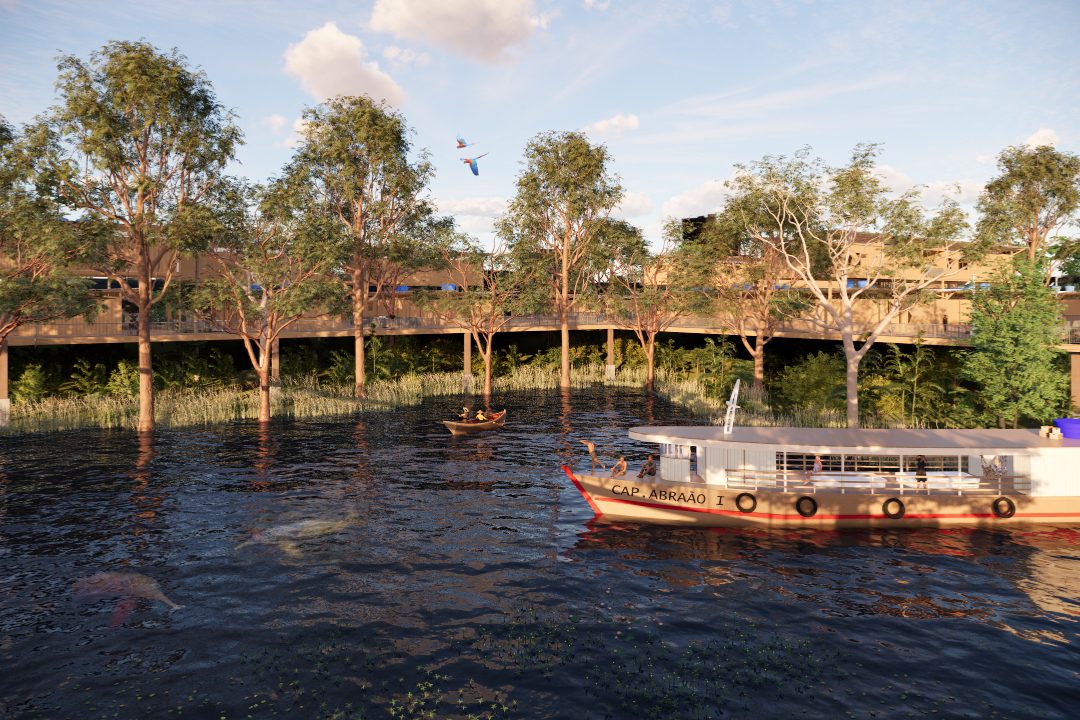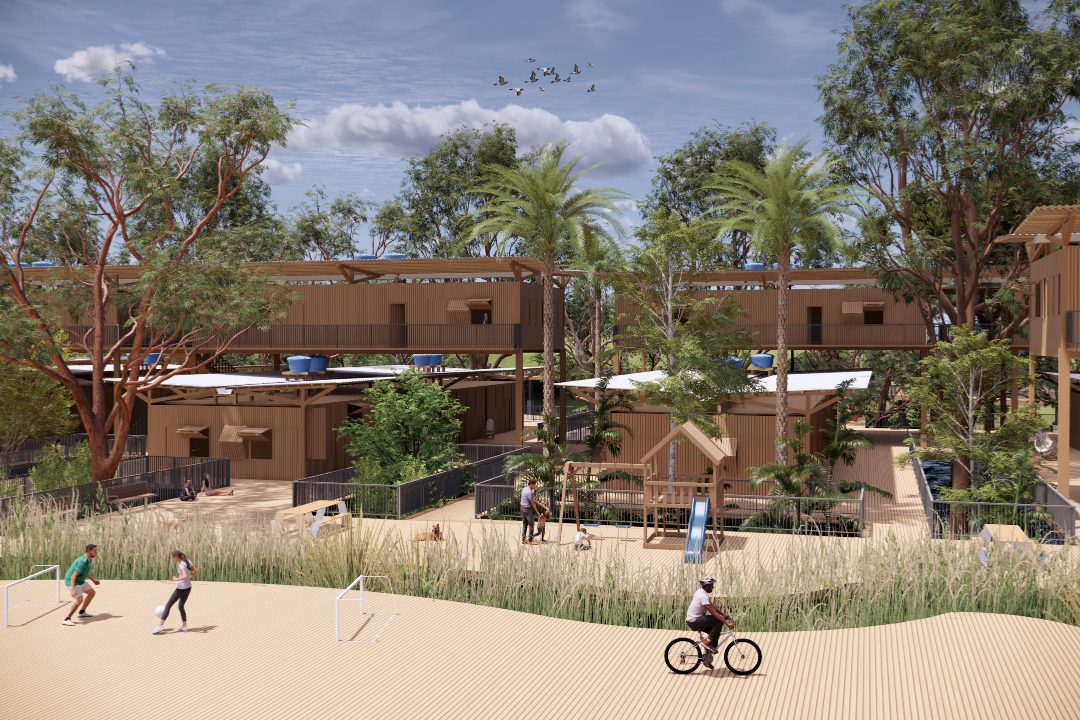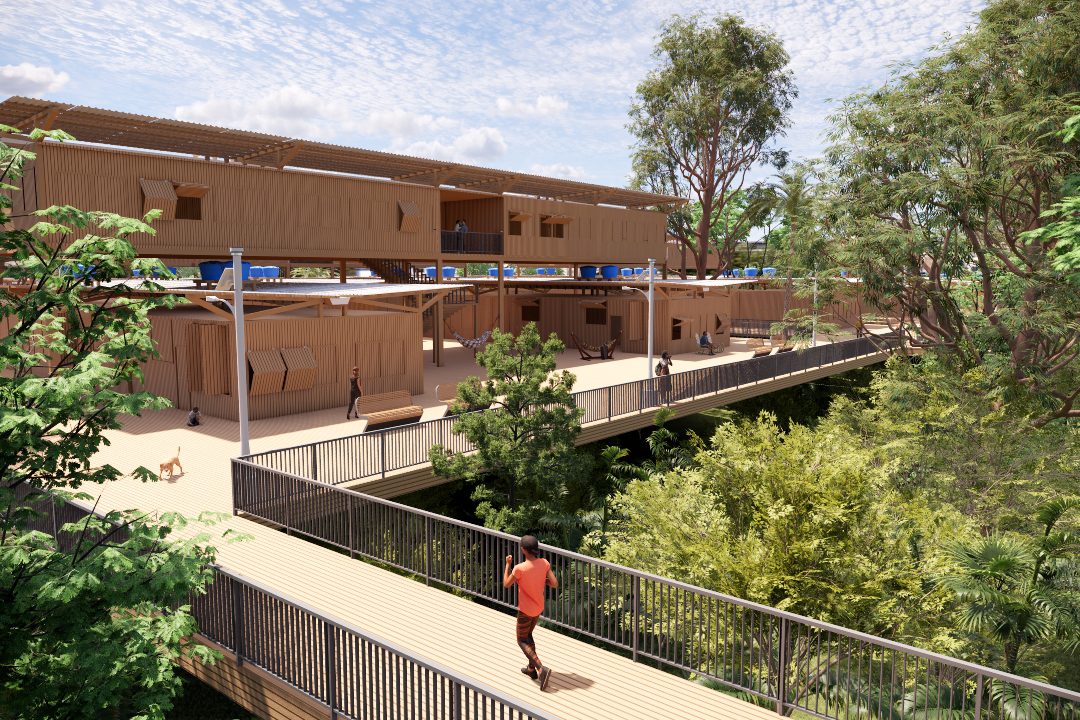Project implementation: Brazil
Project development: Brazil
Student: Victoria Emanuelle Belo da Silva
The development of affordable housing in the Amazon often ignores the region's environmental and cultural peculiarities, adopting standardized, fragile solutions disconnected from the riverside lifestyle. The Casario project emerges as an alternative, proposing an architecture that combines technical innovation, local identity, and ecological respect, focused on decent housing and territorial regeneration.
The design is inspired by riverside houses and stilt houses, reinterpreting these typologies according to contemporary criteria. Certified wood structures combined with concrete pillars ensure strength, durability, and natural ventilation. Passive strategies, such as solar orientation, shading between volumes, and ventilated roofs, promote thermal comfort and energy efficiency without relying on artificial systems.
Located in a Special Area of Social Interest (AEIS) on Avenida Brasil in Manaus, the complex integrates green spaces, community amenities, and collective spaces, strengthening coexistence, belonging, and solidarity networks. Two-story semi-detached blocks feature a variety of typologies, taking advantage of the prevailing ventilation and creating air corridors that function as cooling tunnels, improving indoor and outdoor microclimates.
In the environmental sphere, the proposal works to restore urban streams through natural drainage, artificial wetlands, and biological filters, transforming degraded areas into ecological corridors that connect the natural environment to the city. Thus, inhabitation also means restoring ecosystems, respecting water cycles and traditional ways of life.
Community participation is crucial. The use of regional timber enables assisted self-construction, maintains local techniques, and strengthens ties with the region. Public, private, and housing cooperative partnerships increase economic and social viability, promoting inclusion, autonomy, and local leadership.
Casario demonstrates that social housing, environmental restoration, and cultural appreciation can coexist. By harmonizing vernacular knowledge, modern construction solutions, and ecological care, the project redefines the relationship between city, nature, and society, offering a model of sensitive and sustainable urbanism in the urban Amazon.
Victoria Emanuelle Belo da Silva, a native of Manaus, develops projects that combine environmental preservation and architectural innovation. Her practice emphasizes the restoration of degraded territories and the promotion of local knowledge, contributing to more just and sustainable Amazonian cities.




